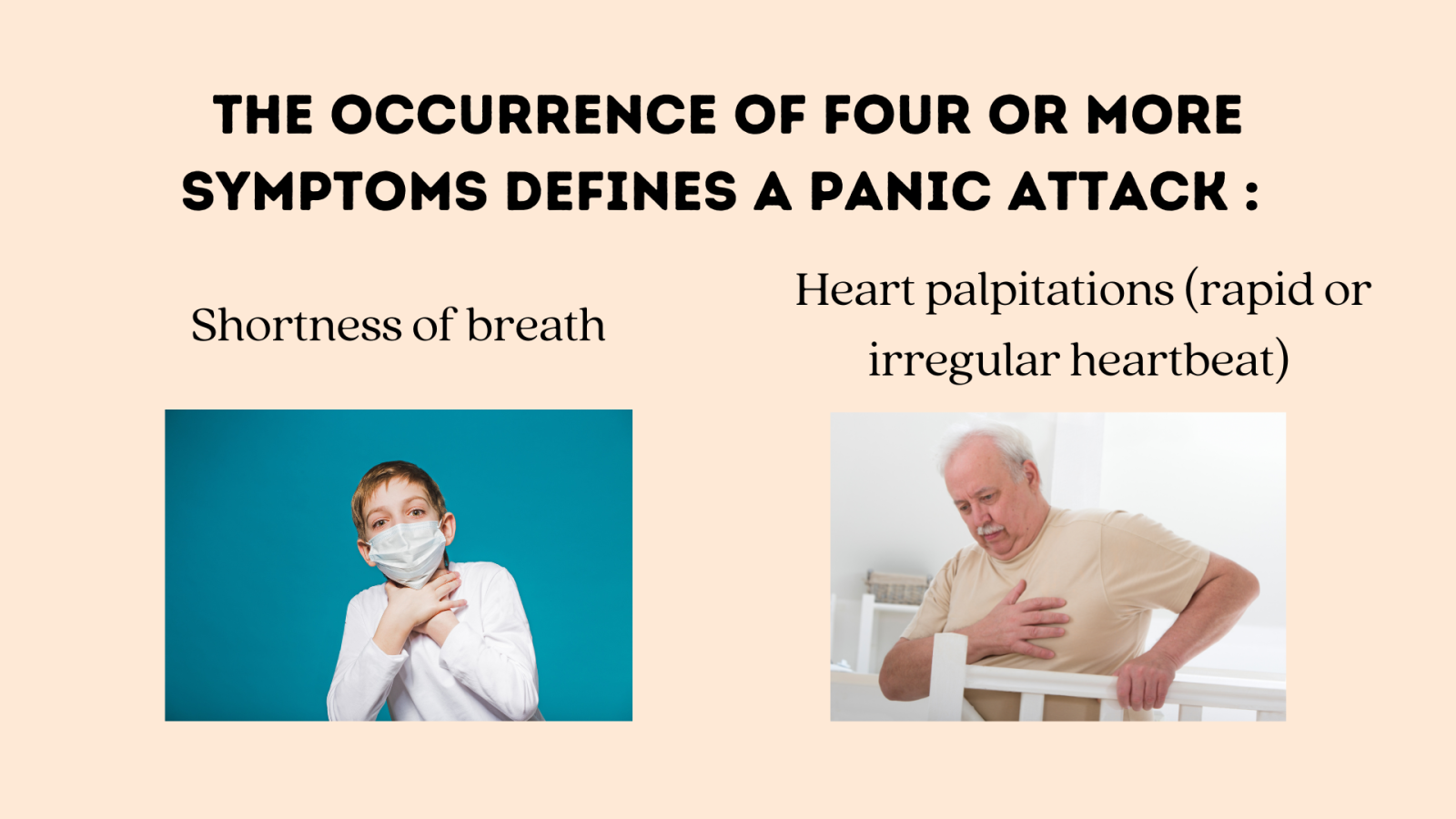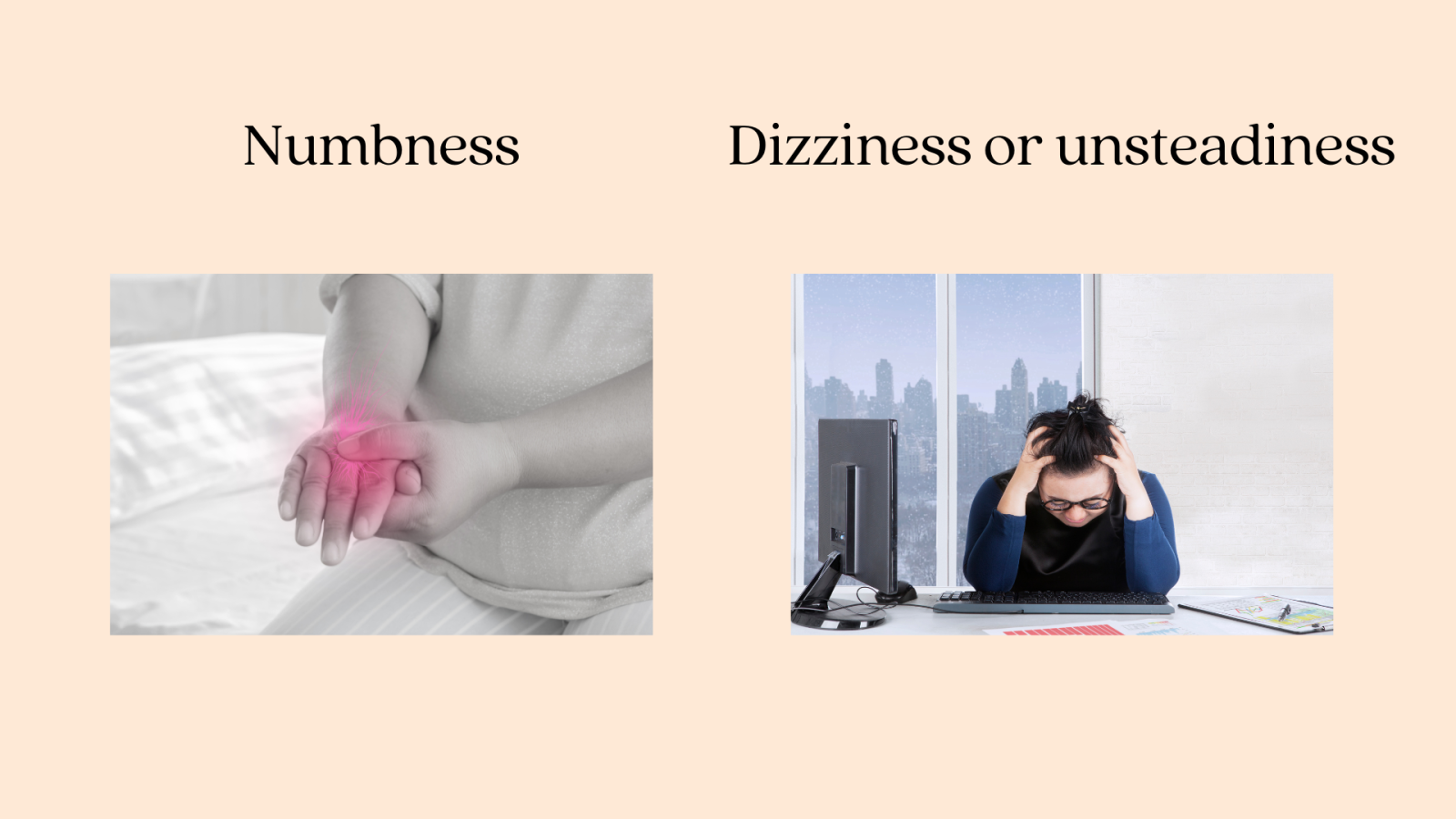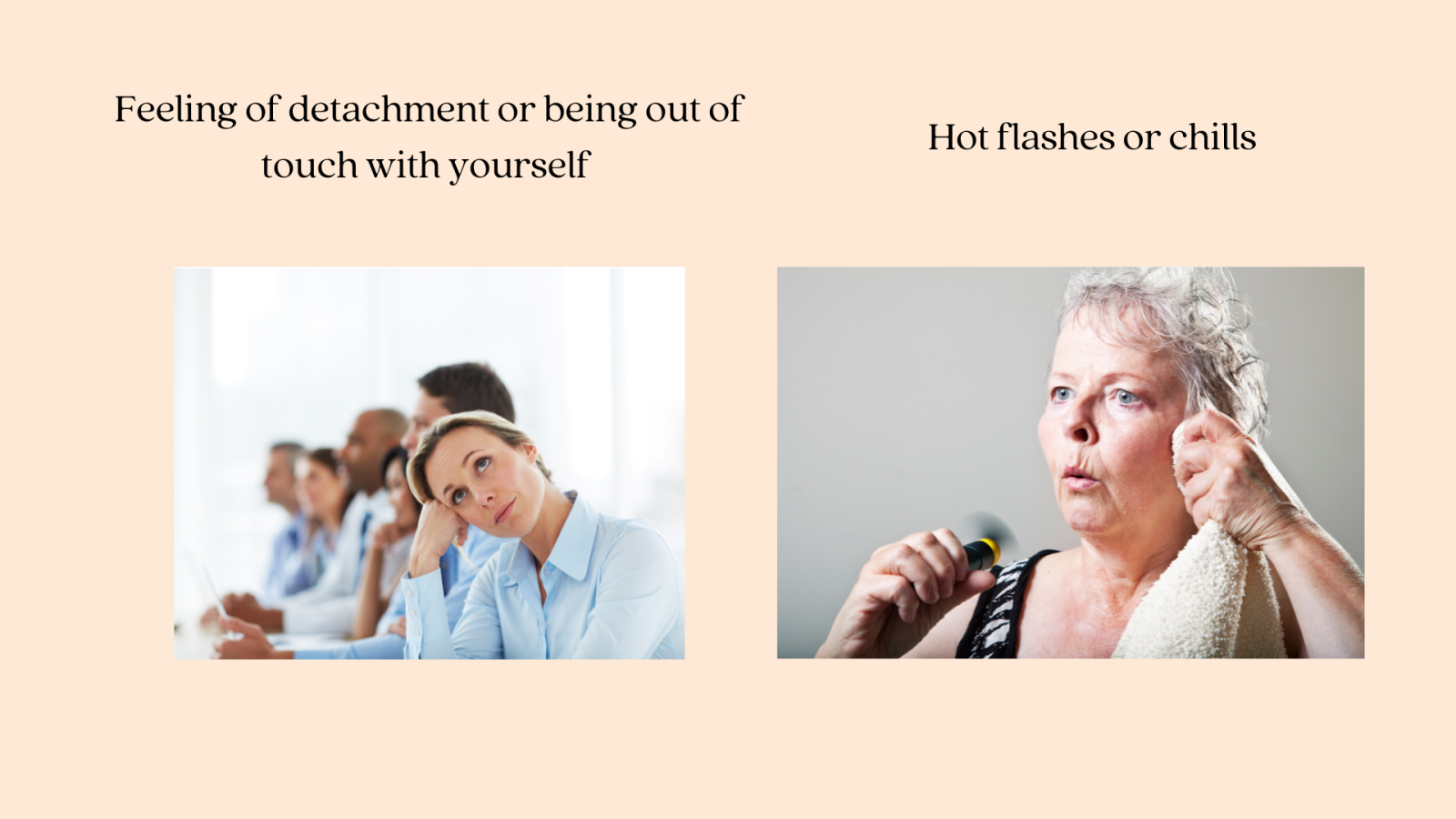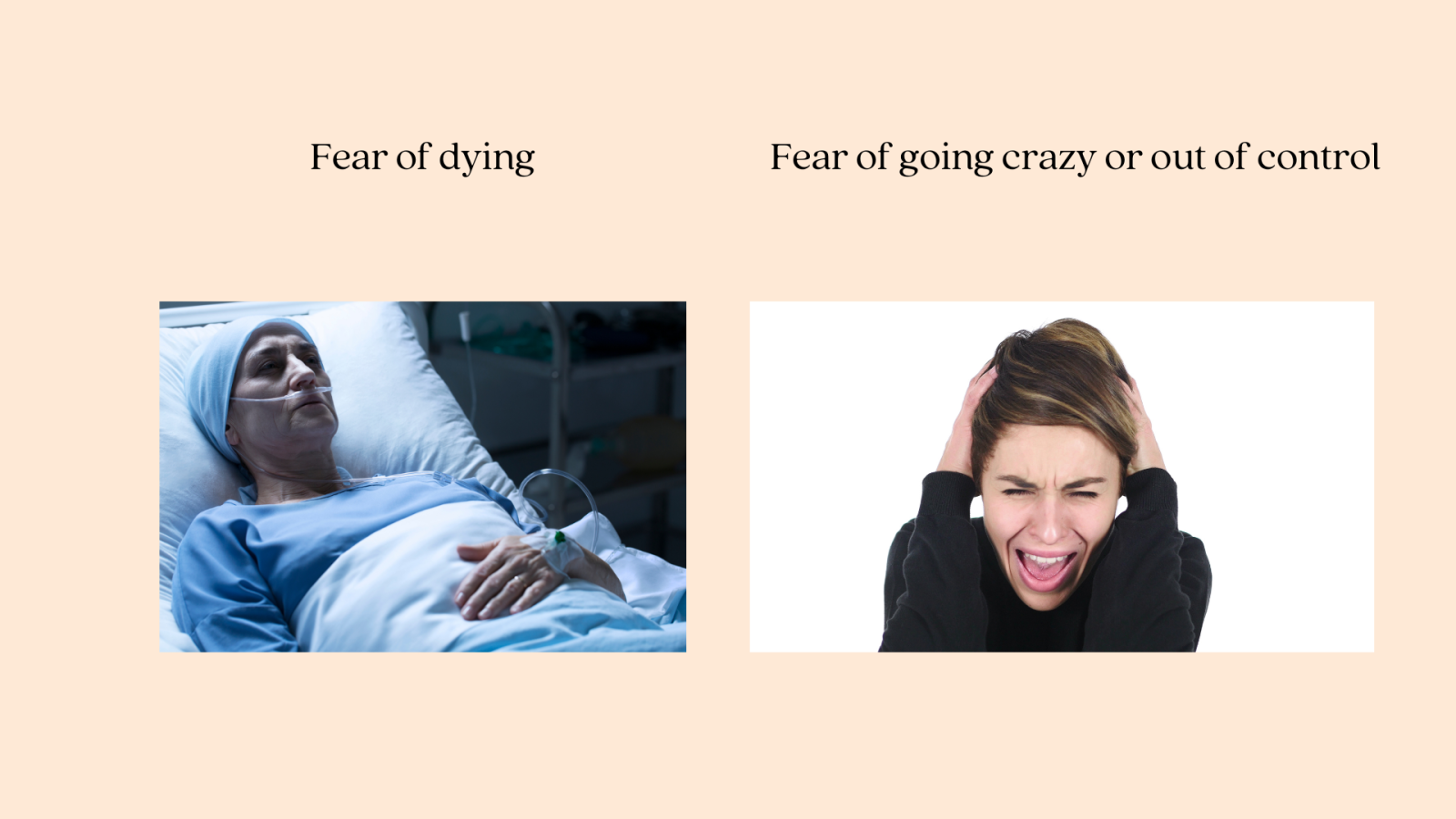Panic disorder is a type of anxiety disorder. It causes panic attacks, which are sudden feelings of terror when there is no real danger. You may feel as if you are losing control. You may also have physical symptoms, such as a Fast heartbeat.
People often talk about having a “panic attack” and feeling “panicked” in an anxiety-provoking situation, alluding to a state of heightened anxiety and arousal. But what exactly is a panic attack, and when does it become a Panic Disorder?
A Panic Attack is defined by a sudden period of intense fear or discomfort, which reaches a peak within minutes, and during which time, four or more of the following symptoms occur:
.png)
.png)


 SYMPTOMS
SYMPTOMS
Palpitations, pounding heart, or accelerate heart rate
Sweating
Trembling or shaking
Sensations of shortness of breath or smothering
Feeling of choking
Chest pain or discomfort
Feeling dizzy, unsteady, lightheaded, or faint
Derealisation (feeling 'unreal') or depersonalisation (feeling detached from yourself)
Fear of losing control or going crazy
Fear of dying
Numbness or tingling sensations
Chills or hot flushes
Our Client's Testimonial Video
Panic attacks tend to start relatively quickly, and peak within 10 minutes. This peak generally lasts for approximately 5-10 minutes before gradually declining. However, it can take longer for all the symptoms of subsiding.
Panic Disorder is characterized by repeated panic attacks that occur often without warning and are accompanied by a preoccupation with the fear of experiencing another attack. It typically begins in adolescence or early adulthood; however, children can also experience panic-like symptoms and panic disorder.
For a Panic Attack to become Panic Disorder, at least one of the panic attacks has to be followed by one month or more of the following:
- Persistent worry about additional panic attacks or their consequences (e.g., having a heart attack, fainting, embarrassing yourself, losing control, “going crazy”)
- A significant change in behavior related to the attacks that are classified as maladaptive (e.g., behaviors attempting to avoid experiencing panic attacks like avoiding exercise or unfamiliar situations)
Panic Attacks vs Panic Disorder
Experiencing panic attacks does not automatically mean you have Panic Disorder. Panic attacks are a relatively common experience and can occur for a variety of reasons, including feeling stressed, overtired, or even after excessive exercise. It is only when you become persistently and excessively worried and concerned about experiencing more panic attacks, or the consequence of experiencing a panic attack that panic attacks become a panic disorder.
It is also possible to experience panic attacks when you have another anxiety disorder. For example, people with social anxiety experience a panic attack before or during an oral presentation, or someone with a specific phobia of dogs experiences a panic attack whenever they are near a dog. However, because these attacks have a known trigger (e.g., being near/around a dog, the thought of giving a speech in front of 500 people), it does not fit the diagnostic criteria for Panic Disorder.
There are two main types of panic attacks:
- Unexpected: Unexpected panic attacks occur suddenly without any external or internal cues. In other words, they occur without a fearful situation or a fearful thought or feeling. They may seem to happen "out of the blue" when someone is completely relaxed.
- Expected: Expected panic attacks occur when someone is exposed to a situation for which they carry fear. For example, someone who has a fear of flying may have a panic attack after being seated in a plane or during take-off.
Our Client's Testimonial Video





